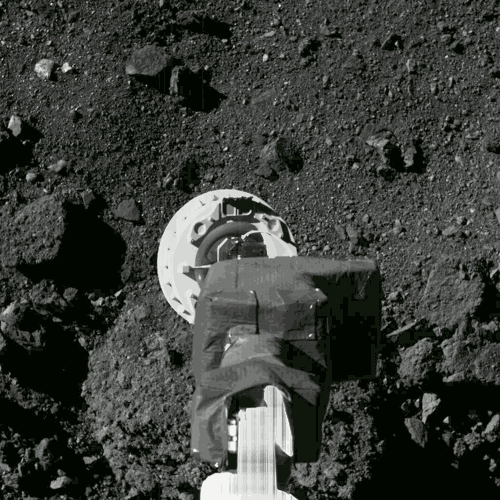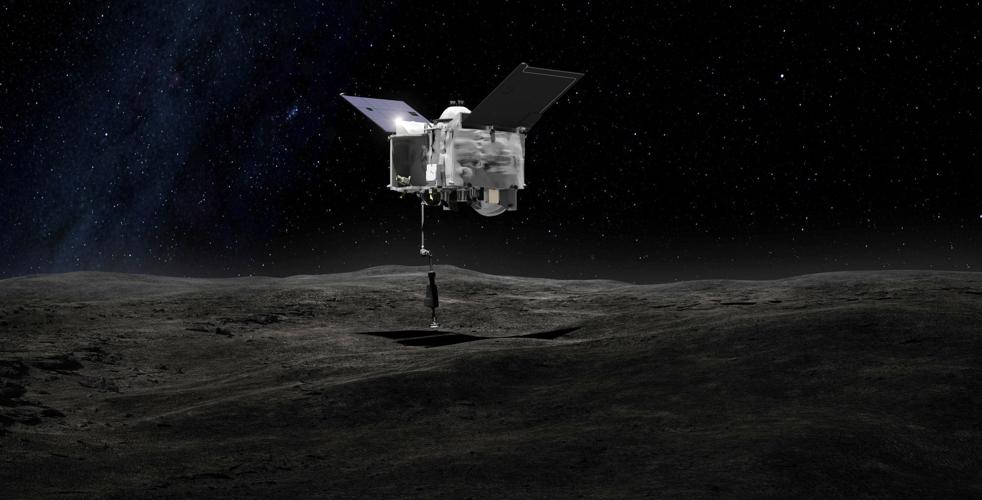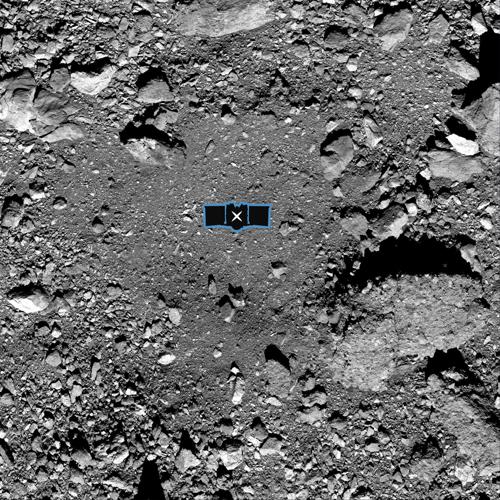If practice makes perfect, the OSIRIS-REx team doesn’t appear to need any more of it.
Everything went exactly as planned on Tuesday as the University of Arizona-led asteroid-sampling mission executed its second and final practice run some 179 million miles from Earth.
The unmanned spacecraft swooped to within 135 feet of the asteroid Bennu and then backed away safely over the course of about four hours.
“It went flawlessly,” said the mission’s principal investigator Dante Lauretta, a professor in the university’s Lunar and Planetary Laboratory. “It really was right down the middle.”
The team from the UA, Lockheed Martin and NASA’s Goddard Space Flight Center will spend the coming weeks combing through every detail from the rehearsal as they prepare for the main event: an Oct. 20 sampling mission that will bring the spacecraft close enough to the surface to collect up to 4.4 pounds of dust and small rocks from the asteroid.
OSIRIS-REx was still beaming data from Tuesday’s test run back to Earth on Wednesday morning.
During the rehearsal itself, all scientists had to go on was basic telemetry — beamed back at a rate far slower than a text message — as the spacecraft moved through a series of maneuvers.
“We were really just getting a few key breadcrumbs,” Lauretta said.
A remote mission with social distancing
The practice run began Tuesday at around 10 a.m. , Tucson time, when the team sent a “go” code to the spacecraft. OSIRIS-REx fired its thrusters and began its close approach to Bennu at about 11:30 a.m.
Lauretta said he knew the spacecraft had safely completed the test at just before 4 p.m., as soon as it sent confirmation of its successful “back-away burn.”
“It was definitely exciting, especially right at the end. A lot of things are happening quickly as you’re getting close to the surface,” he said.
Lauretta had hoped to watch the rehearsal from the mission’s operation center at Lockheed Martin, in the Denver suburb of Littleton, Colorado, but coronavirus concerns kept him away.
“The last thing I wanted was to get someone sick, which could jeopardize the sampling mission,” he said.
Video courtesy of Reid Park Zoo. Read our latest update about baby elephant Penzi here: http://tucne.ws/1fjr
Instead, he wore a mask and followed along with two other people from a conference room at the UA’s Drake Building, which is named for the former director of the university’s Lunar and Planetary Lab and the original principal investigator for the OSIRIS-REx mission.
Michael Drake died in 2011, six months after NASA awarded the UA an $803 million contract to bring back asteroid samples .
Lauretta said his former mentor would have been proud of Tuesday’s practice run.
Tiny samples could answer huge questions
The team’s first rehearsal in April was also a success.
This time around, the spacecraft executed one additional maneuver, called Matchpoint, during which it matched the rotation of Bennu and descended over the chosen sampling site, nicknamed “Nightingale,” inside a 230-foot crater in the asteroid’s northern hemisphere.
Lauretta said the entire command sequence for the test run was uploaded into OSIRIS-REx’s onboard computer a week ago because of a 16-minute communication delay that makes it impossible to guide the spacecraft in real time from so far away.
The same will be done in October, when OSIRIS-REx is scheduled to fly close enough to Bennu for its 11-foot-long collection arm to touch the surface for about five seconds, just long enough to suck up some dirt.
OSIRIS-REx is a clunky acronym for some science salad: “Origins, Spectral Interpretation, Resource Identification, and Security-Regolith Explorer.”
Lauretta said the spacecraft is roughly the size of an SUV, while Bennu is the size of a mountain.
The asteroid was picked because it is rich in carbon and dates back to the formation of the solar system 4.5 billion years ago. Samples of the space rock could fuel decades worth of discoveries about the formation of the planets and the origins of life.
Special delivery from Bennu expected in 2023
A rocket carrying OSIRIS-REx blasted off from Cape Canaveral in Florida on Sept. 8, 2016.
It took the spacecraft more than two years and 1.25 billion miles to catch up to Bennu, entering orbit around the asteroid in December 2018.
Since then, it has been studying and photographing the space rock, resulting in the highest resolution global map of a planetary body ever assembled.
The mission team stitched together 2,155 images to create the Bennu Global Mosaic, which captures details down to 2 square inches in size, sharper than any global map ever made of Earth.
The spacecraft is scheduled to leave the asteroid sometime next spring and return home with its precious cargo on Sept. 24, 2023.
Lauretta said the samples will be hurled down to Earth inside a return capsule about the size of a pizza box. If OSIRIS-REx’s aim is true, the capsule will be collected somewhere within the Air Force’s massive Utah Test and Training Range west of Salt Lake City.
All that leaves very little time to bask in the glow of Tuesday’s perfect practice.
“It was a great day, one of the best days of my life,” said Lauretta, who has been working on the mission since 2004.
“We’re really excited for October. It can’t get here fast enough.”








